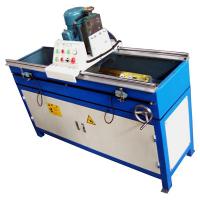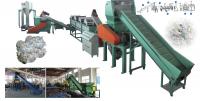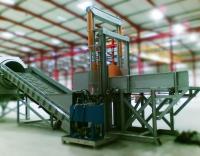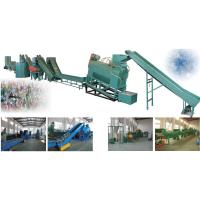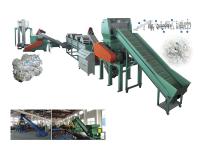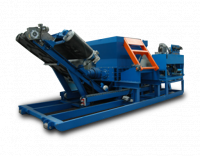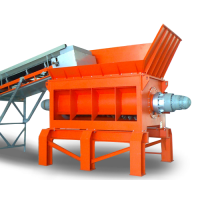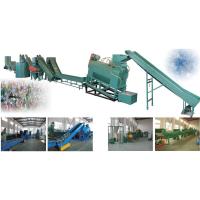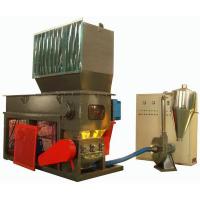Product Specification
| Brand | PLASMAQ Industrial Recycling |
| Condition | New |
| Warranty | YES |
| Mechanical Condition | Others |
| Fuel Type | Gasoline |
Product Descriptions
The PLASMAQ produces equipment for integrated recycling systemsThe recycling industry is an extensive field within the sector "environment" in which they intend to recycle a wide range of waste with the aim to enhance its direct reuse, either by transformation into reusable raw material in the production of other goods.
An important part of this waste is plastic origin, presenting itself in various forms: packs of origins and dimensions, agricultural or other movie sources, housewares and other common feature, its previous use and the inability to, in the same way, be used. We have also included the waste or leftovers of production of plastic transformation industry.
In order to serve the objectives of this recycling activity, develop recycling systems for all types of recyclable plastics, whether from the plastic packaging from small scale until the order of 1000 litres capacity, domestic bottles, dairy packaging, IBC, film, metal packaging up to 200 liters, etc.
A recycling system is defined as a facility with several equipments connected in series and that allow the full treatment of the residue until obtaining a product able to be reused as raw material. This installation is composed of modules with independent functions but that interact to achieve the desired result. We then exemplify an installation base for the recycling of used plastic and with contaminants.
In general we'll cover the following process stages:
1-Milling
2 – washing or decontamination
3-Drying
4-Granulation or pelletising
MILLING
Depending on materials handling can be used two or three phases of milling by sorting them as: Pre-milling or grinding and milling buffer, transecting end.
When the residue is of large dimensions, or presents itself in bales, is used at an earlier stage, a guillotine to cut into pieces to facilitate pré-trituração.
In pré-trituração loved the material by reducing the dimensions in order to suffer a first washing or decontamination treatment. At this stage uses a machine that we call pré-triturador, breaker, prior esfarrapador crusher, mill primary or primary Crusher. Depending on the characteristics of the material will be used machines that suit those characteristics, or rotor Crusher monorotor Crusher slow, forced load crusher, mill or Crusher mill monorotor pills.
Intermediate milling is intended to reduce the material previously washed to a particle size that allows the second phase of washing or decontamination. At this stage and at the stage of final milling using conventional crushers which we call as: grinder mill, windmill blades, high speed shredder, shredder or granulator.
For some materials that do not show high percentages of contaminants is eliminated the intermediate milling phase moving from pré-trituração to the final crunch this already with reduction to desired dimension to the stage of granulation or pelletising.
WASHING or DECONTAMINATION (washing System)
At this stage we intend to release the material on contaminants that accompany it, is land (agricultural or other movies), are the remains of several products (packaging), paper, glues or plastics that are not compatible. The equipment used in this stage vary depending on the materials to be treated and can act singly or combined in order to obtain the best result. We refer to tinas washing and decantation, washing machines with spinning and still the washing trommel.
The decantation and washing tubs when placed in line on the immediate position to pré-trituração have as a function to perform a prewash for agitation, immersion and decanting, offering to that of daughters-in-law that force the material to dive into the water at the same time that the push towards the exit. Into a tub of rinsing this process is usually repeated 3 times until his exit for the next phase which allows you to withdraw a large amount of contaminants. The same equipment is placed in a more advanced stage of the process, usually after the intermediate milling performs a rinsing function and separation of materials for decanting, process in which the heavier materials settle in the background while the lighter materials fluctuate.
The washers by centrifugation are used especially in the decontamination of packaging with higher contaminant content and also because these are important quantities of paper. They are also used in the washing of the film to produce larger quantities of impurities.
The trommel is a rotating machine which, in some cases, by mixing water with a solution of lye, produces a good washing effect. Used especially in metal packaging recycling lines can also be used in recycling schemes, or any other plastics recycling facility, having as the main function drop and separate the material and at the same time shake part of sand and other debris. If placed before the pré-trituração protects the cutting elements of the disposer of premature wear.
DRYING
The crushed material and washed carries with considerable quantities of water which, although go us transport worms separating link the various system equipment and which are equipped with perforated plate funds to facilitate this separation, it is necessary to withdraw so that the material can be treated, in the next stage, by extruder, Pelletizer or peletizadora.
This operation is performed by high speed centrifuges in vats of perforated plate allowing the output of liquids and other impurities are separated in the process of centrifugation.
It is intended that the material, after this operation, not degrees of humidity greater than 5%, varying between 2% and that maximum value. In some materials such as film, is it necessary to seek more than a centrifuge, putting them in line to obtain the desired result. The material, after this operation, is deposited in big-bags or transported to storage silos or forwarded directly to the extruder which will make its granulation or pelletising. This operation completes the recycling cycle by providing material with a purity that allows their reuse in producing different goods.
Recycling line, as described, has a fully automated operation with human intervention only in feeding the first phase of treatment. The transportation between the various elements is made by carriers and screens for worms. The whole line is controlled by a powerful electronic framework programmed depending on the material to be treated and the desired result. On line may be introduced metal detectors with automatic stop element where is made the detection or by overbandes to remove the metal elements of the circuit automatically.
The same principle can be used for metal packaging recycling activity. In this case the crushers used are slow crushers of two rotors, desgarradores or slow chippers with more or less depending on the cutting teeth size admitted. In this line the screens are replaced by metal screens, conveyors of fins or simply metal carriers.
Washing is carried out with use of trommeis.



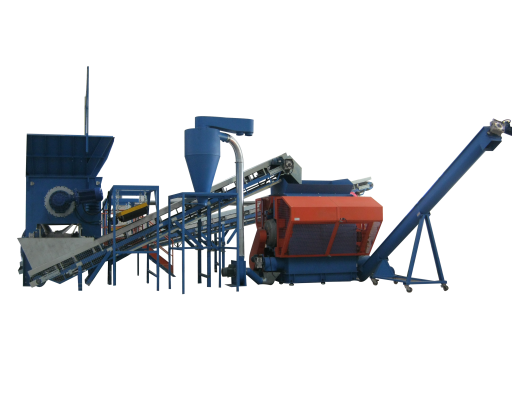
 Safe and secure payments using Abraa safe trade systems
Safe and secure payments using Abraa safe trade systems  \
\
